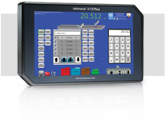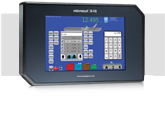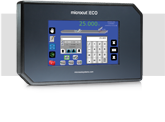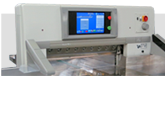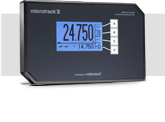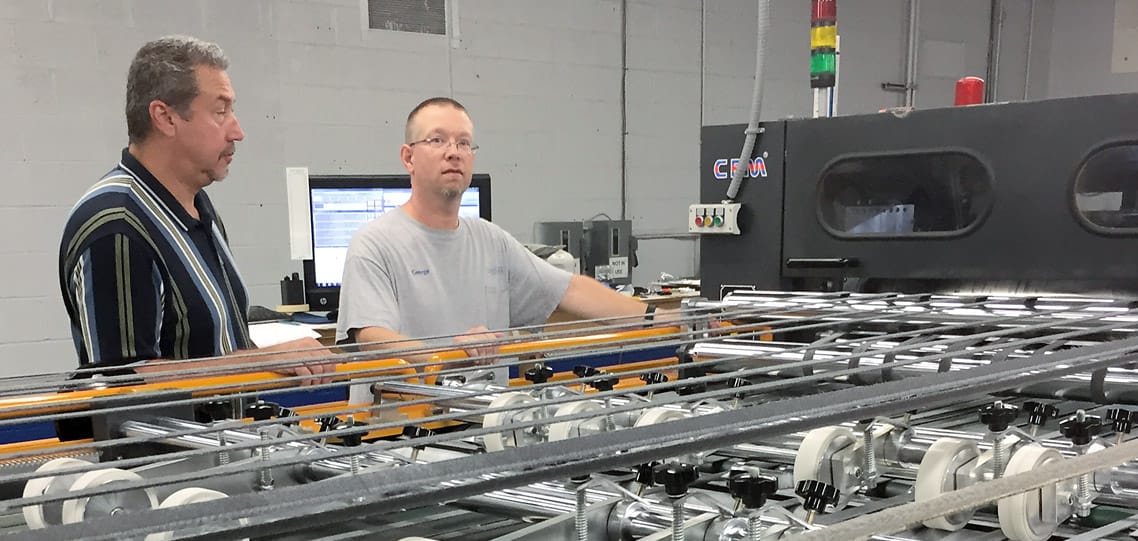In the sports world, the team that makes the better adjustments usually wins the game. It works in the business world as well. When majority owner George Scharr’s Flower City Group decided to make some internal adjustments regarding its paper resources, they turned to North America’s largest distributor of paper handling equipment. Six months after Colter & Peterson delivered a new CHM 1700 precision sheeter, the Flower City Printing business unit in Rochester, NY is experiencing a trifecta of lucrative benefits.
“The machine is doing what we expected it to do. It also has made us whole,” remarked John Humrich, Production Manager for one of the largest graphic service providers in North America. “The make-readies are quicker, we’ve greatly reduced our footprint, and it allows us to make the transition from paper to board quicker.”
The CHM sheeter is built to cut many types of paper and board. Housing the latest technology and Siemens electronics, it offers touch screen control ease, slitter flexibility and servo motor drive systems for smooth and reliable operation. It also has a high accuracy cut rate of +/- .020”.
Humrich says FCP normally produces 20 rolls of board in one day but has sheeted as many as 28. Like most new machines, he says it required some early adjustments.
“We had some early difficulties,” recalled Humrich. “Colter & Peterson did a fantastic job to get it up and running quickly. It ran great until we had an issue where the knives had to be continuously adjusted and it was determined a bracket was the problem. Once we got it figured out and added the correct part, everything is good.”
The CHM is the solution to Flower City Group’s decision to consolidate and close Carta USA. The paper converter subsidiary was located about 10 minutes from FCP’s facility, with 150,000 square-feet of warehouse space. It sold paper in roll and sheet form to FCP and other customers.
“When the decision was made to shutter Carta, that business unit owned four sheeters and we talked to Bruce Peterson about the CHM,” said Humrich. “In the end, the four machines were sold to Colter & Peterson, we bought the new CHM and saved some money, but more importantly we no longer have trucking or downtime issues concerning us. We’ve reduced our inventory and do more ordered sheeting. We now have 30 rolls on hand, where we used to have 150 for ourselves and others.”
FCP is the supplier of choice for several Fortune 500 companies and they have the resources to do so. More than 300 employees take advantage of the high caliber equipment and over 300,000 square-feet of production space available. Humrich says a majority of it is devoted to large format labels, displays and retail packaging. The work requires three larger presses, ranging from a two-year-old, 64” KBA seven-color unit, to a 73” with UV capability and a 62” six-color. A pair of 40” presses include six-color UV and eight-color conventional machines.
Humrich mentioned how FCP also has long-term strategic relationships with printers in Asia, Central America, and the Caribbean Basin for work that is manufactured overseas. That’s where having the CHM 1700 sheeter helps. With the smallest footprint of comparably sized machines at 49 feet long, 17 feet wide and eight feet tall, it can sheet 65” wide rolls with a maximum diameter of 72” and a maximum sheet length of 82” for U.S. operations, and serves as a back-up solution for other countries.
“We do a variety of sizes, from 23” x 35” up to 56” x 72”. Primarily we do 10 pt. and 12 pt. sheet board work, with lots of top sheet litho,” he said. “We are able to sheet litho from 80 pound text up to 24 pt., and we use our four paper cutters (which range in size from 45” to 102”) to trim the litho labels. We use our die cutters (six in all) to cut the board work.”
Humrich commented on how the CHM has raised FCP’s productivity levels.
“Our make-readies are quicker, saving us about 50% in time. We’re down to 20 minutes, when it used to take 45. We were hoping to double our speed but we’re doing okay with being 75% faster,” he said, explaining how it can differ with several factors. “Depending on the stock and length of the sheet, it is specked to run up to 1000 feet per minute or up to 300 cuts, subject to the size and substrate weight.”
Humrich acknowledged that more benefits have been realized.
“We also reduced the number of machine operators from eight to four, but we repurposed the remaining four into other areas and it made our operation more efficient. We’re running three shifts, five days a week, and use additional shifts for weekends and overtime. It’s all good.”


